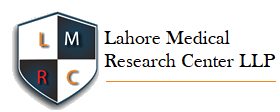Evaluation of Cardiac Profile in CCl4 Induced Toxicity in Albino Rats
Cardiac Profiling in CCl4 Induced Toxicity in Albino Rats
DOI:
https://doi.org/10.54393/mjz.v4i01.62Keywords:
Cardiac Profile, CCl4, Toxicity, Albino RatsAbstract
The use of consumer and fumigant products like CCl4 has been phased down, leaving only industrial usage. It is extremely harmful to one's health. It's also one of the most toxic substances in vital organs like the lungs, kidneys, liver, heart, and brain. Objective: To evaluate the cardiac profile in CCl4-induced toxicity in albino rats. Methods: The research was conducted at animal home of Department of Zoology, University of Okara. The targeted victims were albino rats. There were two types of groups created: control group and experimental group. The rats were fed 30 percent diluted carbon tetrachloride with normal saline as a control group to see if it had an adverse effect on their cardiac profile. A 12-day trek was used to accomplish this. After 12 days, samples were taken or dissected to assess serum Creatine Kinase (CPK), (CK-MB), and (LDH). The samples were analyzed by a machine called Micro-Lab 300 after they were taken by puncturing the Rats' hearts. Results: Abnormal increased level for Creatine Kinase (CPK) (199.20 ± 1.93) was observed after the administration of CCl4 compared to normal control (71.60 ± 4.04). When CCl4 was injected, the level of CK-MB was abnormally high (34.00 ± 1.21) compared to the normal control (16.00± .84). The level of LDH increased abnormally (291.60 ± 5.01) when CCl4 was given, compared to the normal control (250.20± 2.16). Conclusions: The levels of Creatine Kinase (CPK), CK-MB, and LDH were found to be greater than normal, showing that CCl4 is hazardous to rats cardiac profile.
References
Eaton DL and Gilbert SG. Principles of toxicology. In: Casarett & Doull’s Toxicology, The Basic Science of Poisons. McGraw-Hill; 2008.
Rand GM, editor. Fundamentals of aquatic toxicology: effects, environmental fate and risk assessment. CRC press; 1995.
Sundari PN, Wilfred G, Ramakrishna B. Does oxidative protein damage play a role in the pathogenesis of carbon tetrachloride-induced liver injury in the rat? Biochimica et Biophysica Acta (BBA)-Molecular Basis of Disease. 1997 Dec; 1362(2-3): 169-76. doi: 10.1016/S0925-4439(97)00065-3.
Adaramoye OA. Comparative effects of vitamin E and kolaviron (a biflavonoid from Garcinia kola) on carbon tetrachloride-induced renal oxidative damage in mice. Pakistan Journal of Biological Sciences: PJBS. 2009 Aug; 12(16): 1146-51. doi: 10.3923/pjbs.2009.1146.1151.
Slater TF, Cheeseman KH, Ingold KU. Carbon tetrachloride toxicity as a model for studying free-radical mediated liver injury. Philosophical Transactions of the Royal Society of London. B, Biological Sciences. 1985 Dec; 311(1152): 633-45. doi: 10.1098/rstb.1985.0169.
Teschke R. Liver injury by carbon tetrachloride intoxication in 16 patients treated with forced ventilation to accelerate toxin removal via the lungs: A clinical report. Toxics. 2018 Apr; 6(2): 25. doi: 10.3390/toxics6020025.
Schmiechen NJ, Han C, Milzman DP. ED use of rapid lactate to evaluate patients with acute chest pain. Annals of Emergency Medicine. 1997 Nov; 30(5): 571-7. doi: 10.1016/S0196-0644(97)70071-4.
Bodor GS, Porterfield D, Voss EM, Smith S, Apple FS. Cardiac troponin-I is not expressed in fetal and healthy or diseased adult human skeletal muscle tissue. Clinical Chemistry. 1995 Dec; 41(12): 1710-5. doi: 10.1093/clinchem/41.12.1710.
Totsuka M, Nakaji S, Suzuki K, Sugawara K, Sato K. Break point of serum creatine kinase release after endurance exercise. Journal of Applied Physiology. 2002 Oct; 93(4): 1280-6. doi: 10.1152/japplphysiol.01270.2001.
Trask RV and Billadello JJ. Tissue-specific distribution and developmental regulation of M and B creatine kinase mRNAs. Biochimica et Biophysica Acta (BBA)-Gene Structure and Expression. 1990 Jun; 1049(2): 182-8. doi: 10.1016/0167-4781(90)90039-5.
Fontanet HL, Trask RV, Haas RC, Strauss AW, Abendschein DR, Billadello JJ. Regulation of expression of M, B, and mitochondrial creatine kinase mRNAs in the left ventricle after pressure overload in rats. Circulation Research. 1991 Apr; 68(4): 1007-12. doi: 10.1161/01.RES.68.4.1007.
Ohta Y, Nishida K, Sasaki E, Kongo M, Ishiguro I. Attenuation of disrupted hepatic active oxygen metabolism with the recovery of acute liver injury in rats intoxicated with carbon tetrachloride. Research Communications in Molecular Pathology and Pharmacology. 1997 Feb; 95(2): 191-207.
Jayakumar T, Sakthivel M, Thomas PA, Geraldine P. Pleurotus ostreatus, an oyster mushroom, decreases the oxidative stress induced by carbon tetrachloride in rat kidneys, heart and brain. Chemico-Biological Interactions. 2008 Nov; 176(2-3): 108-20. doi: 10.1016/j.cbi.2008.08.006.
Botsoglou NA, Taitzoglou IA, Botsoglou E, Zervos I, Kokoli A, Christaki E, et al. Effect of long‐term dietary administration of oregano and rosemary on the antioxidant status of rat serum, liver, kidney and heart after carbon tetrachloride‐induced oxidative stress. Journal of the Science of Food and Agriculture. 2009 Jun; 89(8): 1397-406. doi: 10.1002/jsfa.3601.
Kurian GA, Philip S, Varghese T. Effect of aqueous extract of the Desmodium gangeticum DC root in the severity of myocardial infarction. Journal of Ethnopharmacology. 2005 Mar; 97(3): 457-61. doi: 10.1016/j.jep.2004.11.028.
Prabhu S, Jainu M, Sabitha KE, Devi CS. Role of mangiferin on biochemical alterations and antioxidant status in isoproterenol-induced myocardial infarction in rats. Journal of Ethnopharmacology. 2006 Aug; 107(1): 126-33. doi: 10.1016/j.jep.2006.02.014.
Shahzad S, Mateen S, Naeem SS, Akhtar K, Rizvi W, Moin S. Syringic acid protects from isoproterenol induced cardiotoxicity in rats. European Journal of Pharmacology. 2019 Apr; 849: 135-45. doi: 10.1016/j.ejphar.2019.01.056.
Chrostek L and Szmitkowski M. Enzymatic diagnosis of alcoholism-induced damage of internal organs. Psychiatria Polska. 1989 Sep; 23(5-6): 353-60.
Chen YH, Wu XD, Yao ST, Sun S, Liu XH. Calcineurin is involved in cardioprotection induced by ischemic postconditioning through attenuating endoplasmic reticulum stress. Chinese Medical Journal. 2011 Oct; 124(20): 3334-40.
Elberry AA, Abdel-Naim AB, Abdel-Sattar EA, Nagy AA, Mosli HA, Mohamadin AM, et al. Cranberry (Vaccinium macrocarpon) protects against doxorubicin-induced cardiotoxicity in rats. Food and Chemical Toxicology. 2010 May; 48(5): 1178-84. doi: 10.1016/j.fct.2010.02.008.
Rajadurai M and Prince PS. Preventive effect of naringin on cardiac markers, electrocardiographic patterns and lysosomal hydrolases in normal and isoproterenol-induced myocardial infarction in Wistar rats. Toxicology. 2007 Feb; 230(2-3): 178-88. doi: 10.1016/j.tox.2006.11.053.
Pacà A, Meità S, Boyvin L, Yeo D, Kouakou TH, Nâ JD. Cardioprotective and anti-inflammatory activities of a polyphenols enriched extract of Hibiscus sabdariffa petal extracts in wistar rats. Journal of Pharmacognosy and Phytochemistry. 2015 Apr; 4(1): 57-63.
Mansour HH and Hasan HF. Protective effect of N-acetylcysteine on cyclophosphamide-induced cardiotoxicity in rats. Environmental Toxicology and Pharmacology. 2015 Sep; 40(2): 417-22. doi: 10.1016/j.etap.2015.07.013.
Al‐Shabanah O, Mansour M, El‐Kashef H, Al‐Bekairi A. Captopril ameliorates myocardial and hematological toxicities induced by adriamycin. IUBMB Life. 1998 Jun; 45(2): 419-27. doi: 10.1080/15216549800202802.
Chopra S, Pillai KK, Husain SZ, Girl DK. Propolis protects against doxorubicin-induced myocardiopathy in rats. Experimental and Molecular Pathology. 1995 Jun; 62(3): 190-8. doi: 10.1006/exmp.1995.1021.
Nemmar A, Beegam S, Yuvaraju P, Yasin J, Tariq S, Attoub S, et al. Ultrasmall superparamagnetic iron oxide nanoparticles acutely promote thrombosis and cardiac oxidative stress and DNA damage in mice. Particle and Fibre Toxicology. 2015 Dec; 13(1): 1-1. doi: 10.1186/s12989-016-0132-x.
Cavas L and Tarhan L. Effects of vitamin-mineral supplementation on cardiac marker and radical scavenging enzymes, and MDA levels in young swimmers. International Journal of Sport Nutrition and Exercise Metabolism. 2004 Apr; 14(2): 133-46. doi: 10.1123/ijsnem.14.2.133.
Karras DJ and Kane DL. Serum markers in the emergency department diagnosis of acute myocardial infarction. Emergency Medicine Clinics of North America. 2001 May; 19(2): 321-37. doi: 10.1016/S0733-8627(05)70186-3.
Potluri S, Ventura HO, Mulumudi M, Mehra MR. Cardiac troponin levels in heart failure. Cardiology in Review. 2004 Jan; 12(1): 21-5. doi: 10.1097/01.crd.0000089981.53961.cf.
Zarei M and Shivanandappa T. Amelioration of cyclophosphamide-induced hepatotoxicity by the root extract of Decalepis hamiltonii in mice. Food and Chemical Toxicology. 2013 Jul; 57: 179-84. doi: 10.1016/j.fct.2013.03.028.
Budas GR, Jovanovic S, Crawford RM, Jovanovic A. Hypoxia-induced preconditioning in adult stimulated cardiomyocytes is mediated by the opening and trafficking of sarcolemmal KATP channels. The FASEB journal: official publication of the Federation of American Societies for Experimental Biology. 2004 Jun; 18(9): 1046. doi: 10.1096/fj.04-1602fje.
Downloads
Published
How to Cite
Issue
Section
License
Copyright (c) 2023 MARKHOR (The Journal of Zoology)

This work is licensed under a Creative Commons Attribution 4.0 International License.
This is an open-access journal and all the published articles / items are distributed under the terms of the Creative Commons Attribution License, which permits unrestricted use, distribution, and reproduction in any medium, provided the original author and source are credited. For comments editor@markhorjournal.com











